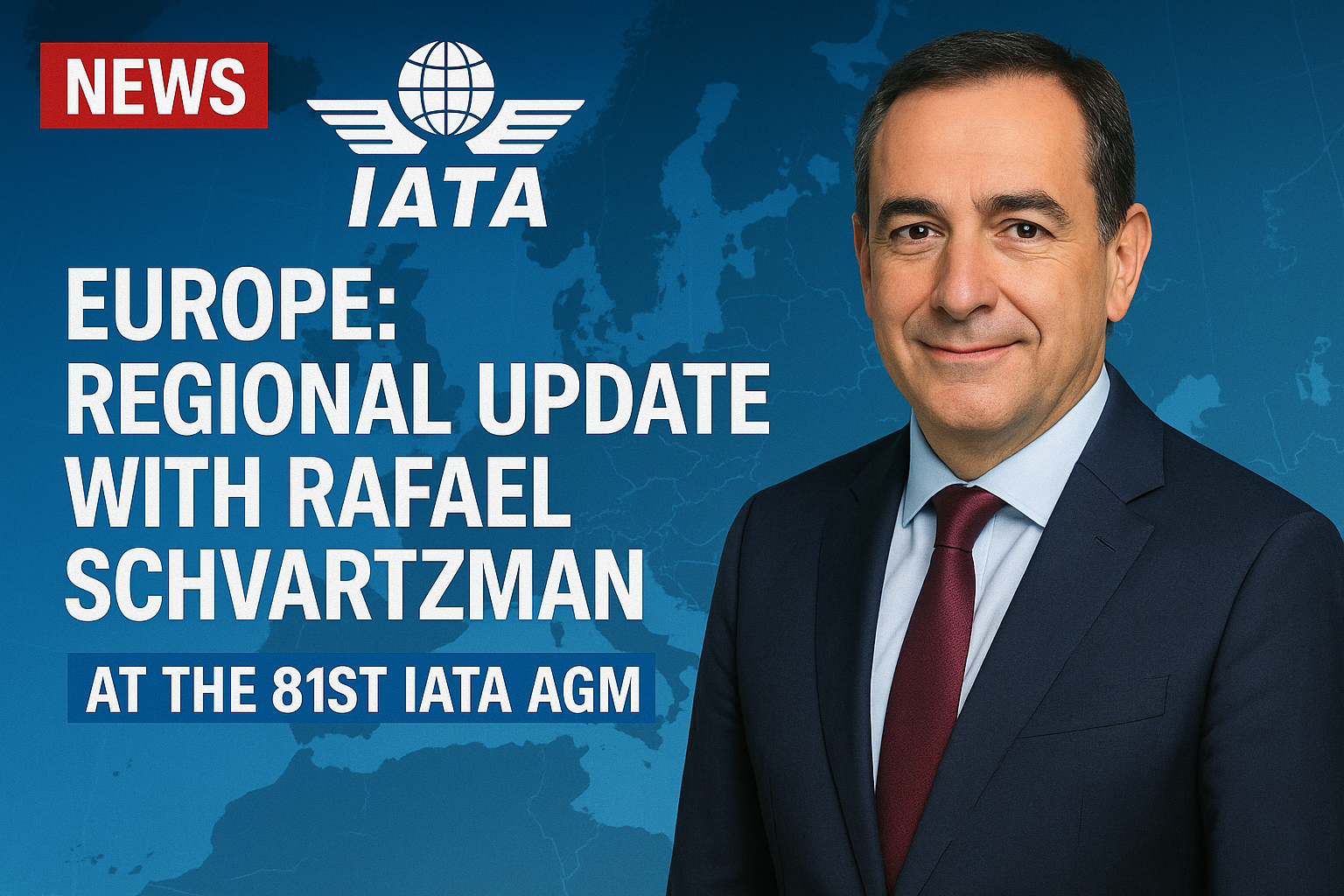In a sharp regional update delivered at the IATA 81st Annual General Meeting, Rafael Schvartzman, IATA’s Regional Vice President for Europe, outlined a sobering assessment of the challenges facing the continent’s air transport sector. His central message: Europe’s competitiveness is under threat, and aviation — a key enabler of economic dynamism — must not be neglected in the policy landscape.
“The number one issue obviously facing Europe is competitiveness,” Schvartzman stated, citing the influential Draghi report which identified competitiveness as the continent’s top priority. “Air transport is being highlighted as a critical part of that competitiveness,” he emphasized.
Connectivity Collapse: A German Case Study
Schvartzman pointed to Germany as a clear example of the erosion in air connectivity undermining economic vitality. “If I look at the connectivity case of Germany in aviation, you see a drop — for example, a 52% drop in connectivity in the domestic market. Take out Frankfurt and Munich, and the drop is close to 75%.” This dramatic reduction, he argued, directly impacts the competitiveness of Europe’s largest economy, making the case for urgent intervention.
Roadmap to Restoring Competitiveness
To improve the competitiveness of European air transport, Schvartzman outlined four key areas for reform:
- Consumer Rights Legislation (EU261): “We need to reform the consumer rights legislation,” he said, pointing to how current rules create legal and financial burdens on airlines that distort the market.
- Sustainability Regulations: Europe’s sustainability ambitions are commendable, but regulations need to be adapted to support innovation and scalability. “The improvement of the RefuelEU Aviation initiative is very critical,” he noted.
- Tax Reform: Europe’s tax landscape is another hurdle. “There are quite a number of taxes that are hindering the industry’s ability to invest in the sustainability transition,” he warned.
- Efficiency in Airspace and Airports: Better coordination and cost efficiency from Air Navigation Service Providers (ANSPs) and airports are essential to maintaining service quality while managing environmental targets.
The Capacity Crisis
Capacity is another pressing issue, with Schvartzman sounding the alarm over the stagnation — and in some cases, rollback — of infrastructure expansion. “We are not building capacity,” he said bluntly. “Look at Lisbon — it’s running out of capacity.”
Even more concerning, he noted, are efforts to reduce existing capacity without fully considering newer, quieter, and cleaner aircraft technologies. Amsterdam was cited as a case in point, where government decisions to limit airport activity ignore the potential of a balanced approach. “We must use the balanced approach to address capacity constraints — not blunt instruments,” Schvartzman emphasized.
Conclusion
Schvartzman’s remarks serve as a wake-up call for European policymakers. With economic competitiveness increasingly tied to efficient, sustainable, and accessible air transport, the region must rethink its approach. Reforming regulation, enabling infrastructure growth, and fostering innovation are no longer optional — they are critical to Europe’s future in global aviation.





